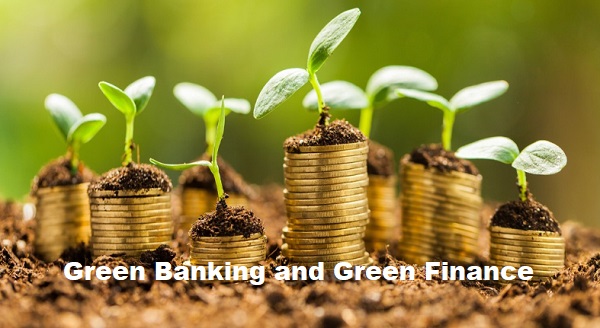In recent years, the concepts of green banking and finance have gained significant traction as global awareness of environmental issues intensifies. The transition to a sustainable economy necessitates not only the adoption of eco-friendly practices in various sectors but also a fundamental shift in how financial institutions operate and invest. Green banking and finance represent a paradigm shift aimed at integrating environmental considerations into financial decision-making, promoting sustainability, and mitigating climate change impacts.
What is Green Banking?
Green banking refers to the practice of ensuring that banking activities are conducted in a manner that helps reduce environmental impact and promotes sustainability. This involves a range of initiatives, from reducing the carbon footprint of bank operations to financing projects that have positive environmental outcomes.
Key Components of Green Banking
- Green Products and Services: Offering financial products such as green loans, green bonds, and mortgages that are designed to support environmentally friendly projects. These products often come with incentives like lower interest rates for projects that meet certain sustainability criteria.
- Sustainable Operations: Implementing eco-friendly practices within the bank’s operations, such as reducing paper usage, increasing energy efficiency, and minimizing waste. Many banks are adopting digital platforms to cut down on paper and physical resource consumption.
- Environmental Risk Management: Incorporating environmental risk assessments into the decision-making process. Banks evaluate the environmental impact of their lending and investment activities to avoid funding projects that could harm the environment.
- Corporate Social Responsibility (CSR): Engaging in CSR activities that focus on environmental conservation, community development, and education on sustainability. Banks often support local environmental projects and initiatives as part of their CSR efforts.
What is Green Finance?
Green finance encompasses a broader spectrum, including the financial investments made in projects that support environmental sustainability. It involves the allocation of capital to projects that aim to reduce carbon emissions, enhance energy efficiency, and promote renewable energy sources.
Key Components of Green Finance
- Green Bonds: These are bonds specifically earmarked to be used for climate and environmental projects. They have become a popular tool for raising capital for green projects, providing investors with a means to support sustainable development.
- Sustainable Investment Funds: These funds invest in companies that meet certain environmental, social, and governance (ESG) criteria. Investors increasingly seek out these funds to align their portfolios with their values on sustainability.
- Renewable Energy Financing: Providing capital for the development and expansion of renewable energy sources such as wind, solar, and hydroelectric power. This not only helps in reducing dependency on fossil fuels but also supports the growth of green energy industries.
- Climate Risk Assessment: Financial institutions incorporate climate risk into their financial models to better understand and mitigate the risks associated with climate change. This includes assessing the financial impact of extreme weather events and long-term climate shifts on their investments.
Benefits of Green Banking and Finance
- Environmental Impact: By directing capital towards sustainable projects, green banking and finance play a crucial role in reducing greenhouse gas emissions, conserving natural resources, and promoting biodiversity.
- Economic Growth: Investing in green technologies and sustainable practices can spur economic growth by creating new industries and job opportunities in sectors like renewable energy and energy efficiency.
- Risk Management: Incorporating environmental risk assessments helps financial institutions mitigate potential losses associated with environmental degradation and climate change.
- Reputation and Brand Value: Banks and financial institutions that adopt green practices often enjoy enhanced reputation and customer loyalty, as consumers and investors increasingly prioritize sustainability.
Despite the numerous benefits, the transition to green banking and finance is not without challenges. These include the need for a clear regulatory framework, the risk of greenwashing, and the initial costs associated with adopting green practices. Furthermore, there is a need for increased awareness and education on the importance of sustainable finance among stakeholders.
Looking ahead, the future of green banking and finance will likely see greater collaboration between governments, financial institutions, and non-governmental organizations to develop comprehensive strategies for sustainability. Innovations in technology, such as blockchain and artificial intelligence, could also play a pivotal role in advancing green finance by improving transparency and efficiency.
Green banking and finance represent a crucial pathway towards achieving sustainable development. By integrating environmental considerations into financial practices, the banking and finance sectors can significantly contribute to the global effort to combat climate change and promote a healthier, more sustainable planet.

